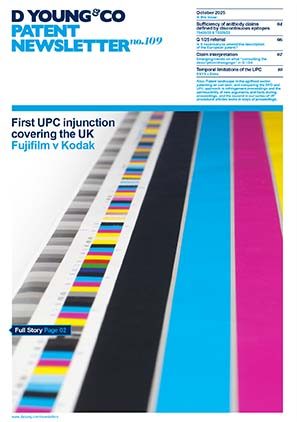Sufficiency of antibody claims defined by discontinuous epitopes: T0435/20 & T0326/22
The European Patent Office (EPO) Boards of Appeal have recently issued two contrasting decisions (T0435/20 & T0326/22), examining the relevant factors for the sufficiency of claims directed to antibodies which are defined by discontinuous epitopes.
Since we discussed T0435/20 & T0326/22 in our July European biotech patent case law webinar, these cases have been added to the latest edition of the Case Law of the Boards. This confirms that these cases are highly relevant and will be taken into account by the EPO when considering the sufficiency of such claims.
Background
In contrast to some other jurisdictions, notably the USA, the EPO generally applies a relatively low bar regarding the level of disclosure required for antibody claims. For example, it is established EPO case law that raising and screening monoclonal antibodies involves only routine experimentation.
The EPO Guidelines for Examination explicitly state that an antibody may be claimed by reference to its epitope (the structurally defined part of the antigen that it specifically binds to). However, the application must enable the skilled person to produce further antibodies having the claimed functional property without undue burden.
T 0435/20: claim was not enabled
In T0435/20, the claim at issue defined the antibody by reference to a discontinuous epitope (by reference to non-adjacent regions of the antigen’s primary amino acid sequence).
The patent disclosed an example antibody which bound at the claimed discontinuous epitope. However, the patent did not describe in detail how this example antibody was prepared, which specific antigen should be used for the generation of further antibodies, nor any screening methods to reliably identify further antibodies which bound at the claimed discontinuous epitope.
The appeal board held that the skilled person would not be able to arrive at the claimed antibodies without an undue burden, for the following reasons:
- The patent does not disclose a suitable antigen for obtaining a pool of candidate antibodies.
- Even assuming the skilled person were able to arrive at such a pool, there was no teaching in the patent regarding pre-screening methods to narrow to a sub-pool of candidates.
- Therefore, the skilled person wanting to perform the claimed invention would have to develop an elaborate screening process and there was no guarantee that even a single antibody having the same specificity would be generated.
T 0326/22: claim was enabled
A similar claim was at issue in T0326/22. Significantly, however, in addition to defining the antibody by reference to a discontinuous epitope, the claim also referred to two additional functional features, which related to pre-screening assays which could be used to narrow to a sub-pool of candidate antibodies.
As in the earlier case, the patent disclosed an example antibody which bound at the claimed epitope. However, in contrast to T0435/20, the patent did disclose in detail how the example antibody was prepared and which antigen should be used for the generate of further antibodies. Moreover, the patent disclosed suitable screening assays, which related to the unique epitope bound by the example antibody.
The Board of Appeal held that the patent described a complete process for generating the example antibody and that the skilled person could repeat the same process to arrive at further antibodies without undue burden. Whilst the generation of further antibodies is based on chance, the opponents did not provide any evidence that further antibodies could not been generated merely by repeating the examples.
Summary
These contrasting decisions emphasise that product claims directed to antibodies which are defined by discontinuous epitopes are allowable, but that the bar for sufficiency of disclosure is relatively high compared to other types of antibody claims.
The Board of Appeal in T 0326/22 explicitly confirmed that the fact situation differed from T435/20. To enable product claims directed to antibodies which are defined by discontinuous epitopes, it is crucial to disclose in the patent both:
- a suitable antigen for raising further antibodies; and
- (appropriate pre-screening assays for selecting antibodies that specifically bind to the claimed discontinuous epitope.
Whilst the inclusion of an example antibody binding to the claimed discontinuous epitope and a description of a competitive-binding assay supported enablement in T0326/22, the Board of Appeal in T 0435/20 did not consider this alone to be enough to enable such claims.
As a patentee, these cases are a reminder to consider whether functional features which correspond to pre-screening assays can be inserted into the claims to strengthen them against sufficiency attacks. As an opponent, these cases confirm that the bar for sufficiency is relatively high for such claims and a variety of attacks can be raised.
Related webinars
T0435/20 & T0326/22 were discussed in our July 2025 European biotech patent case law webinar, now available on demand: dycip.com/biotech-patent-jul2025
Visit our events pages for details of our forthcoming 18 November 2025 biotech case law webinar.

